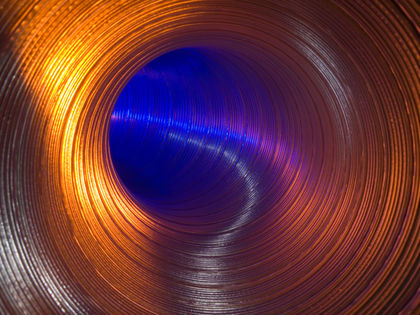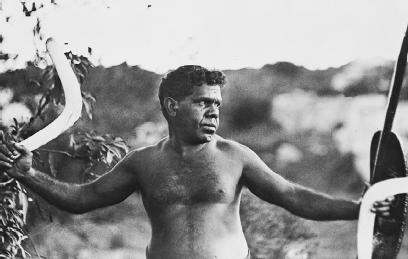Bernoulli's Principle - How it works

The Venturi Tube
Also significant was the work of the Italian physicist Giovanni Venturi (1746-1822), who is credited with developing the Venturi tube, an instrument for measuring the drop in pressure that takes place as the velocity of a fluid increases. It consists of a glass tube with an inward-sloping area in the middle, and manometers, devices for measuring pressure, at three places: the entrance, the point of constriction, and the exit. The Venturi meter provided a consistent means of demonstrating Bernoulli's principle.
Like many propositions in physics, Bernoulli's principle describes an ideal situation in the absence of other forces. One such force is viscosity, the internal friction in a fluid that makes it resistant to flow. In 1904, the German physicist Ludwig Prandtl (1875-1953) was conducting experiments in liquid flow, the first effort in well over a century to advance the findings of Bernoulli and others. Observing the flow of liquid in a tube, Prandtl found that a tiny portion of the liquid adheres to the surface of the tube in the form of a thin film, and does not continue to move. This he called the viscous boundary layer.
Like Bernoulli's principle itself, Prandtl's findings would play a significant part in aerodynamics, or the study of airflow and its principles. They are also significant in hydrodynamics, or the study of water flow and its principles, a discipline Bernoulli founded.
Laminar vs. Turbulent Flow
Air and water are both examples of fluids, substances which—whether gas or liquid—conform to the shape of their container. The flow patterns of all fluids may be described in terms either of laminar flow, or of its opposite, turbulent flow.
Laminar flow is smooth and regular, always moving at the same speed and in the same direction. Also known as streamlined flow, it is characterized by a situation in which every particle of fluid that passes a particular point follows a path identical to all particles that passed that point earlier. A good illustration of laminar flow is what occurs when a stream flows around a twig.
By contrast, in turbulent flow, the fluid is subject to continual changes in speed and direction—as, for instance, when a stream flows over shoals of rocks. Whereas the mathematical model of laminar flow is rather straightforward, conditions are much more complex in turbulent flow, which typically occurs in the presence of obstacles or high speeds.
Turbulent flow makes it more difficult for two streams of air, separated after hitting a barrier, to rejoin on the other side of the barrier; yet that is their natural tendency. In fact, if a single air current hits an airfoil—the design of an airplane's wing when seen from the end, a streamlined shape intended to maximize the aircraft's response to airflow—the air that flows over the top will "try" to reach the back end of the airfoil at the same time as the air that flows over the

When viscosity is absent, conditions of perfect laminar flow exist: an object behaves in complete alignment with Bernoulli's principle. Of
